A Journey To Strasbourg – A Beautiful Ancient City of Europe
Strasbourg is the prefecture and largest city of the Grand Est region of eastern France and the official seat of the European Parliament. Located at the border with Germany in the historic region of Alsace, it is the prefecture of the Bas-Rhin department.
Strasbourg is the perfect overture to all that is idiosyncratic about Alsace – walking a fine tightrope between France and Germany and between a medieval past and a progressive future, it pulls off its act in an inimitable Alsatian style.
Tear your gaze away from that mesmerizing Gothic cathedral for just a minute and you’ll be roaming the old town’s twisting alleys lined with crooked half-timbered houses à la Grimm; feasting in the coziest of wing stubs (Alsatian taverns) by the canals in Petite France, and marveling at how a city that does Christmas markets and gingerbread so well can also be home to the glittering EU Quarter and France’s second-largest student population. But that’s Strasbourg for you: all the sweeter for its contradictions and cross-cultural quirks, according to Lonely Planet.
The history of Strasbourg - ‘The town at the crossroads’
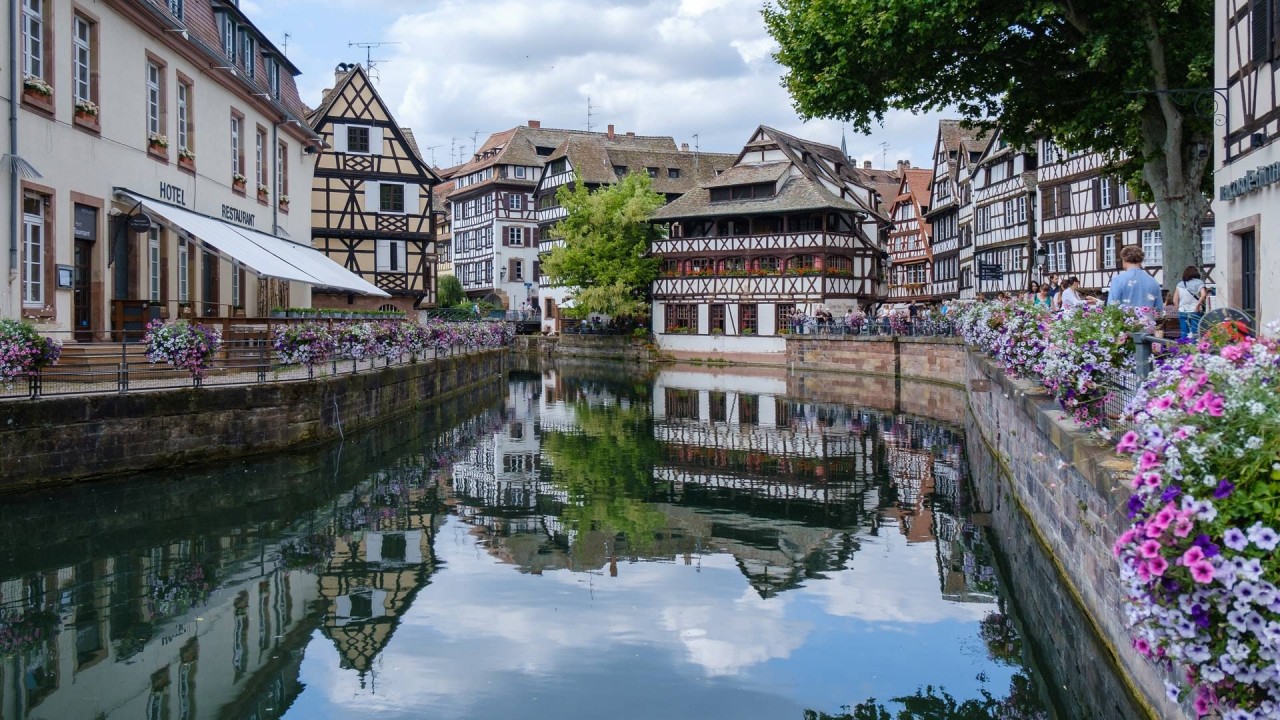 |
| Photo: Travel Dudes |
For visitors wanting to see Paris and one other French city - or indeed just one French city other than Paris, Strasbourg is the place.
Strasbourg is one of the great historic cities of Europe, and its history is very different from that of Paris.
In the year 840 AD, on the death of Emperor Charlemagne's son Louis the Pious, the great Frankish "Holy Roman" Empire was split into three parts. West Francia in the west became the heartland of modern France. East Francia in the east became Germany; and between them lay Middle Francia – an area today made up of small states, Luxembourg Belgium, the Netherlands, and Switzerland. Between Luxembourg and Switzerland, middle Francia included the duchies of Alsace, Lorraine, and Burgundy, which are today part of France. But this was not always the case.
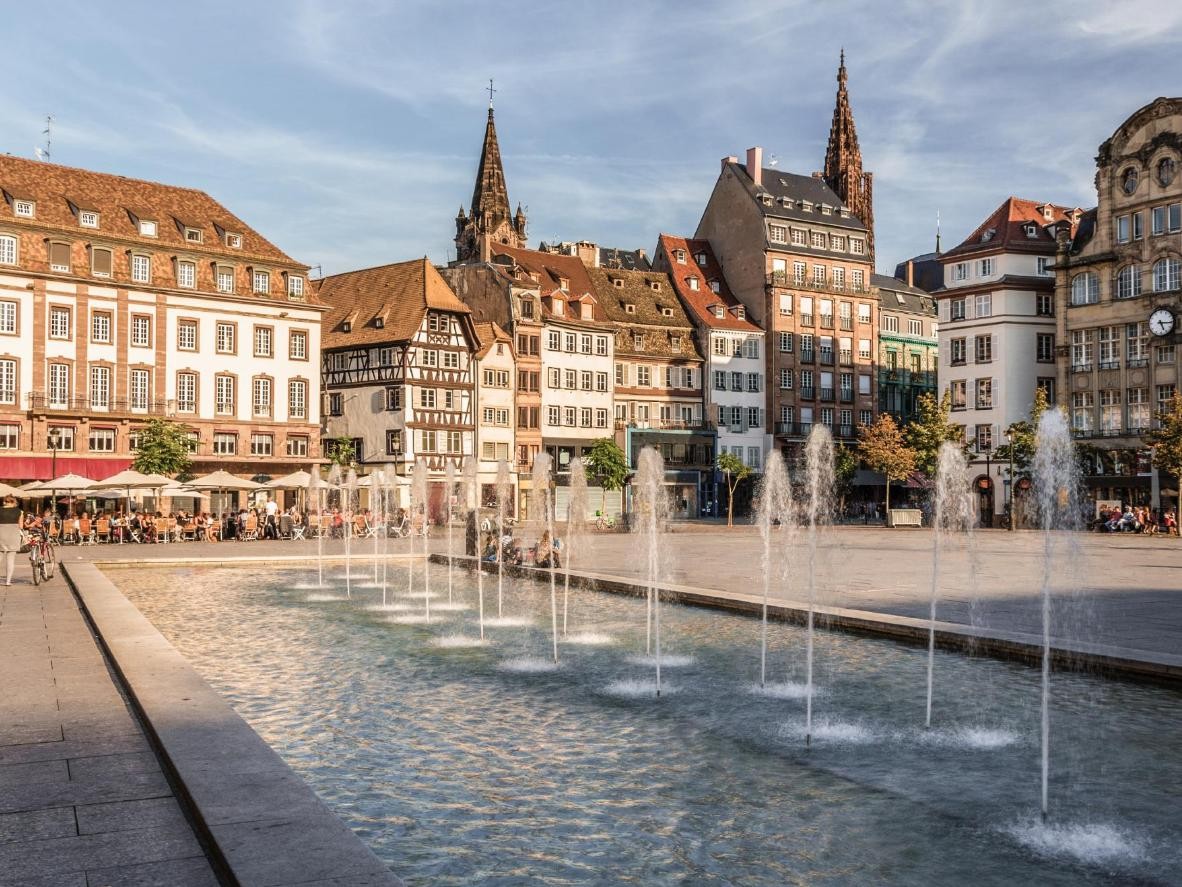 |
| Photo: Booking |
Alsace, and with it Strasbourg, only became French in the 17th century. Alsace was French from 1648 to 1871, but during this time it remained German-speaking. From 1871 until 1919, and again from 1940 to 1944, Alsace was annexed by Germany.
While today the people of Alsace all speak French, the historic Germanic culture of the city of Strasbourg is tangible, and indeed part of the city's identity. Many signs are written up in both French and Alsatian (a dialect of German), or sometimes just in Alsatian; and signs on many historic buildings are written up using the classically German Gothic script, according to About France.
Strasbourg played an important part in Protestant Reformation, with personalities such as John Calvin, Martin Bucer, Wolfgang Capito, Matthew, and Katharina Zell, but also in other aspects of Christianity such as German mysticism, with Johannes Tauler, Pietism, with Philipp Spener, and Reverence for Life, with Albert Schweitzer. Delegates from the city took part in the Protestation at Speyer. It was also one of the first centres of the printing industry with pioneers such as Johannes Gutenberg, Johannes Mentelin, and Heinrich Eggestein. Among the darkest periods in the city's long history were the years 1349 (Strasbourg massacre), 1518 (Dancing plague), 1793 (Reign of Terror), 1870 (Siege of Strasbourg) and the years 1940–1944 with the Nazi occupation (atrocities such as the Jewish skeleton collection) and the British and American bombing raids. Some other notable dates were the years 357 (Battle of Argentoratum), 842 (Oaths of Strasbourg), 1538 (establishment of the university), 1605 (world's first newspaper printed by Johann Carolus), 1792 (La Marseillaise), and 1889 (pancreatic origin of diabetes discovered by Minkowski and Von Mering).
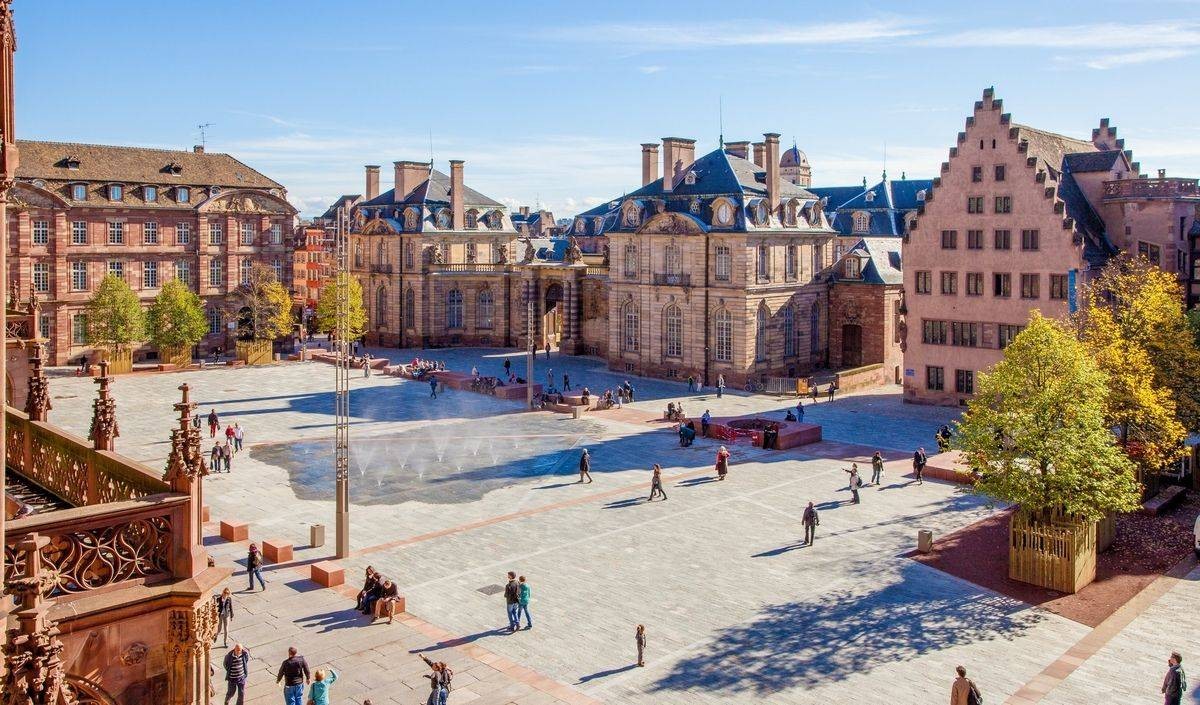 |
| Photo: Office de Tourisme de Strasbourg |
Strasbourg has been the seat of European Institutions since 1949: first of the International Commission on Civil Status and of the Council of Europe, later of the European Parliament, of the European Science Foundation, of Eurocorps, and others as well.
Best Time To Visit Strasbourg
Popular as a destination hosting a number of important European institutions, Strasbourg is the capital of France’s Alsace region.
Summer: The best time to visit Strasbourg is May to August and December given the pleasant temperatures and festive cheer respectively. July is the hottest month in Strasbourg with the average temperature being around 20°C (67°F). The month of May receives an average rainfall of 90mm of rain, hence making it the wettest month.
Autumn: The month of September is the month of the grape harvest, with many interesting activities lined up around this activity. October experiences the onset of autumn when the weather is still pleasant and beautiful and you can bask in most of this city minus the tourist crowd.
Winter: The coldest month is January when the temperatures drop to 2°C (35°F).
Strasbourg’s Tourist Attractions
1. Cathédrale Notre-Dame
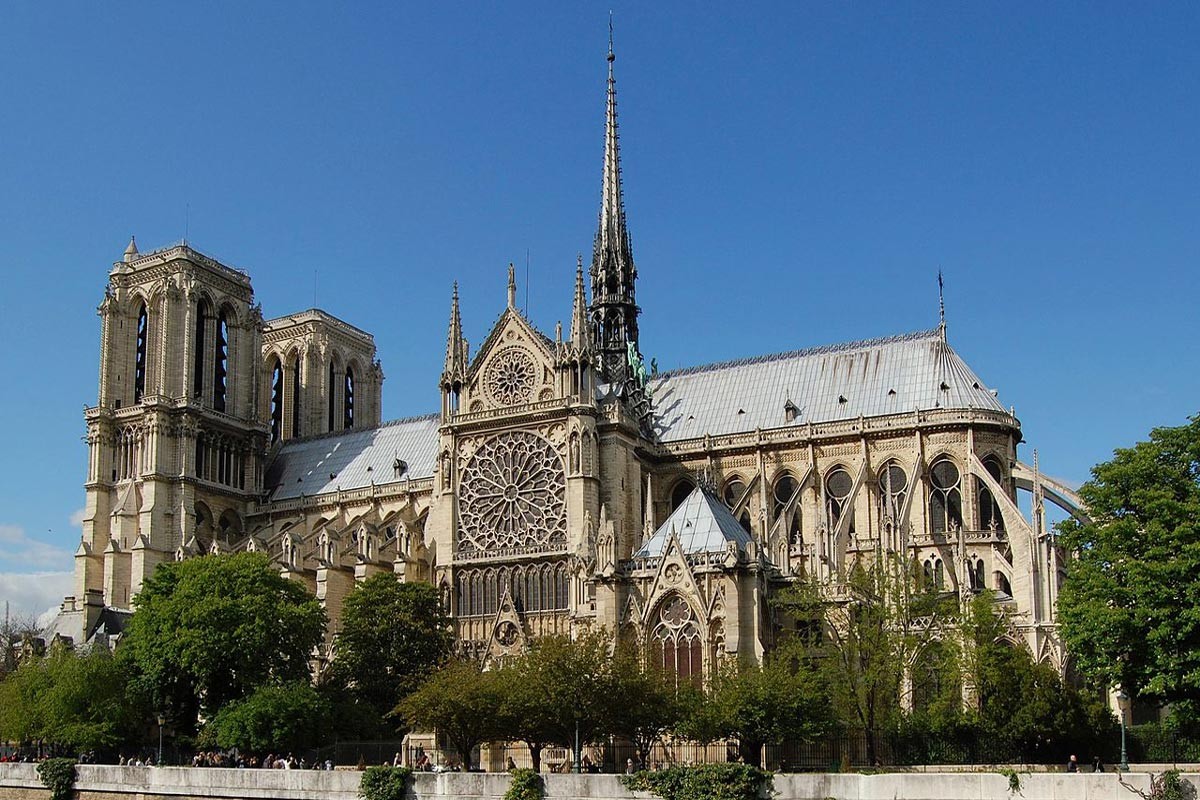 |
| Photo: Villes.fr |
Notre-Dame de Paris (meaning "Our Lady of Paris"), referred to simply as Notre-Dame, is a medieval Catholic cathedral on the Île de la Cité in the 4th arrondissement of Paris. The cathedral was consecrated to the Virgin Mary and is considered to be one of the finest examples of French Gothic architecture. Its pioneering use of the rib vault and flying buttress, its enormous and colorful rose windows, as well as the naturalism and abundance of its sculptural decoration set it apart from the earlier Romanesque style. Major musical components that make Notre Dame stand out include its three pipe organs, one of which is historic; and its immense church bells.
The cathedral's construction began in 1163 under Bishop Maurice de Sully and was largely complete by 1260, though it was modified frequently in the following centuries. In the 1790s, Notre-Dame suffered desecration during the French Revolution; much of its religious imagery was damaged or destroyed. In the 19th century, the cathedral was the site of the coronation of Napoleon I and the funerals of many presidents of the French Republic.
2. Petite France
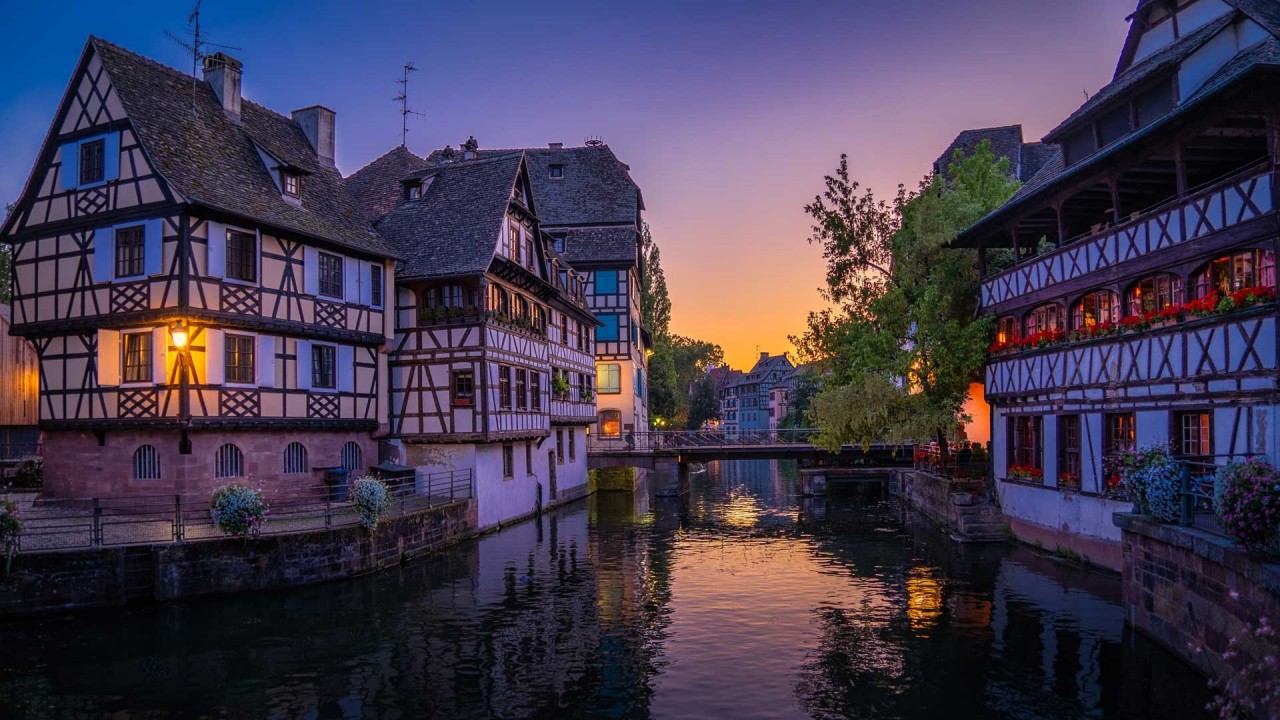 |
| Photo: Maison Lutetia R |
La Petite France (also known as the Quartier des Tanneurs; German: Gerberviertel; "Tanner's Quarter") is a historic quarter of the city of Strasbourg in eastern France. It is located at the western end of the Grande Île, which contains the historical centre of the city. At Petite France, the River Ill splits up into a number of channels that cascade through an area that was, in the Middle Ages, home to the city's tanners, millers and fishermen, and is now one of Strasbourg's main tourist attractions. Petite France forms part of the UNESCO World Heritage Site of Grande Île, designated in 1988.
Just upstream of Petite France, the River Ill flows through the Barrage Vauban, a defensive structure built at the end of the 17th century. Downstream of this, the river splits into the Canal du Faux-Rempart, which flows to the north of the Grande Île, and four channels which flow through the Petite France quarter before reuniting in the main channel of the river, flowing to the south of the Grande Île. These four channels are spanned by the Ponts Couverts, an earlier defensive structure of three bridges and four towers that, despite its name, has not been covered since the 18th century.
3. Grande Île
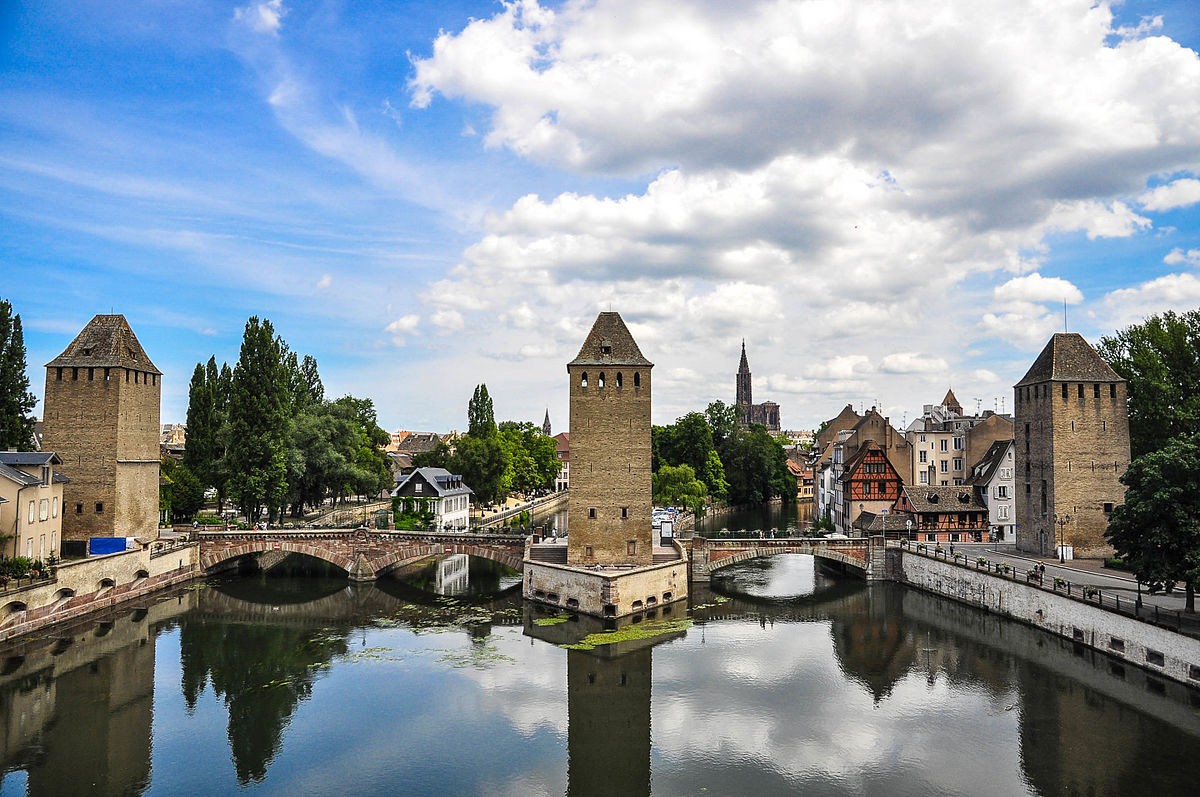 |
| Photo: Wikipedia |
The Grande Île (German: Große Insel) is an island that lies at the historic centre of the city of Strasbourg in France. Its name means "Large Island", and derives from the fact that it is surrounded on one side by the main channel of the Ill River and on the other side by the Canal du Faux-Rempart, a canalized arm of that river. Grande Île was named a UNESCO World Heritage Site in 1988. At the time, the International Council on Monuments and Sites noted that Grande Île is "an old quarter that exemplifies medieval cities". Strasbourg was the first city to have its entire city center be listed as a World Heritage Site.
Grande Île is sometimes referred to as "ellipse insulaire" because of its shape. It measures some 1.25 kilometres (0.78 mi) by 0.75 kilometres (0.47 mi) at its longest and broadest. At the centre of the island lies Place Kléber, the city's central square. Further south is Strasbourg Cathedral, the world's fourth-tallest church and an ornate example of 15th-century Gothic architecture. At the western end of the island is the quarter of Petite France, the former home of the city's tanners, millers, and fishermen, and now one of Strasbourg's main tourist attractions. The Grande Île also houses the former fluvial customs house Ancienne Douane.
4. Palais Rohan
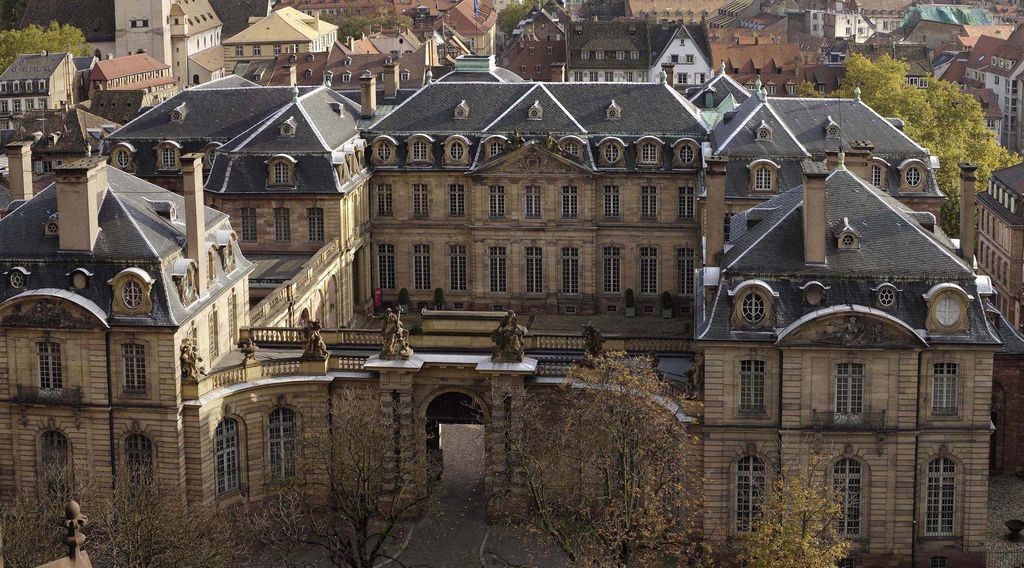 |
| Photo: Office de tourisme de Strasbourg |
Hailed as a ‘Versailles in miniature’, this opulent 18th-century residence is loaded with treasures. The basement Musée Archéologique takes you from the Palaeolithic period to AD 800. On the ground floor is the Musée des Arts Décoratifs, where rooms adorned with Hannong ceramics and gleaming silverware evoke the lavish lifestyle of the nobility in the 18th century. On the 1st floor, the Musée des Beaux-Arts' collection of 14th- to 19th-century art includes El Greco, Botticelli, and Flemish Primitive works.
Built in 1732 by French architect Robert de Cotte, of Versailles fame, the episcopal palace was once the lavish abode of the city’s princely bishops, and Louis XV and Marie-Antoinette once stayed here, according to Lonely Planet.
5. Place de la République
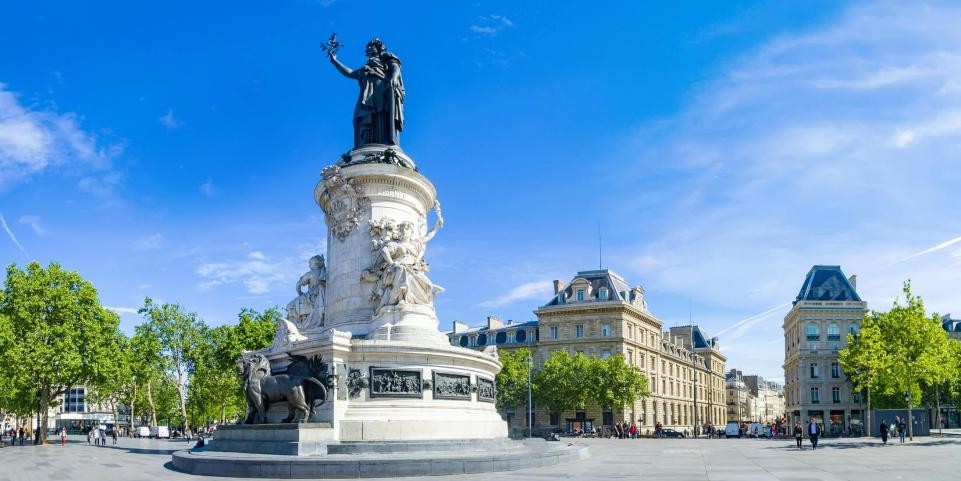 |
| Photo: OUI.sncf |
The Place de la République (known as the Place du Château d'Eau until 1879) is a square in Paris, located on the border between the 3rd, 10th, and 11th arrondissements. The square has an area of 3.4 ha (8.4 acres). Named after the First, Second, and Third Republic, it contains a monument that includes a statue of the personification of France, Marianne.
The Métro station of République lies beneath the square, served by Line 3, Line 5, Line 8, Line 9, and Line 11. It is one of the network's main transfer points on the Rive Droite.
The square was originally called the Place du Château d'Eau, named after a huge fountain designed by Pierre-Simon Girard and built on the site in 1811. Émile de La Bédollière wrote that the water came from la Villette and that the fountain was "superb" in character. In 1867, Gabriel Davioud built a more impressive fountain in the square, which (like the first fountain) was decorated with lions. The square took its current shape as part of Baron Hausmann's vast renovation of Paris. Haussmann also built new barracks in the cities, to garrison troops useful in times of civil unrest.
At the center of the Place de la République is a 31 feet (9.4 m) bronze statue of Marianne, the personification of the French Republic, "holding aloft an olive branch in her right hand and resting her left on a tablet engraved with Droits de l'homme (the Declaration of the Rights of Man and of the Citizen)." The statue sits atop a monument that is 75 feet (23 m) high. Marianne is surrounded by three statues personifying liberty, equality, and fraternity, the values of the French Republic. These statues also evoke the three medieval theological virtues. Also at the base is a lion guarding a depiction of a ballot box. The monument has been described as "an ordinary one, acceptable to a committee in the 1880s and inoffensively unarresting today."
 | Top 10 Most Stunning National Parks in Asia Asia is a most favorite destination in the world, with national parks being one of the tourist attractions that draw people from all over the ... |
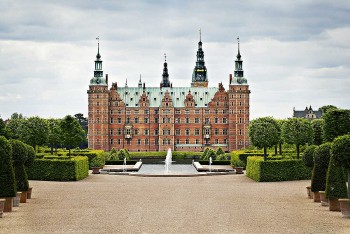 | Top 8 Most Beautiful Castles In Denmark Europe is the land of the most stunning and gorgeous castles in the world, and Denmark's castles have their own distinctive and unique architecture and ... |
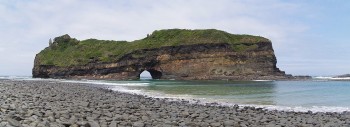 | Discover The Most Beautiful Places You Can Visit In South Africa South Africa is one of the most famous tourist destinations for wilderness lovers, adventurers, and tourists who want to experience something new. Don't forget to ... |
Recommended
 Travel
Travel
Vietnam Through Australian Eyes: Land of Flavor, Warmth, and Timeless Charm
 Travel
Travel
Strategies for Sustainable Growth of Vietnam’s Tourism from International Markets
 Travel
Travel
Vietnam Strengthens Its Presence On The Global Tourism Map
 Multimedia
Multimedia
Phong Nha-Ke Bang National Park Named Top Adventure Travel Site
 Travel
Travel
Vietnam Welcomes Record-High Number of International Visitors
 Travel
Travel
Luxury Train From Hanoi To Hai Phong To Be Launched In May
 Travel
Travel
Phong Nha Named Top Budget-Friendly Travel Destination for Spring 2025: Agoda
 Travel
Travel


